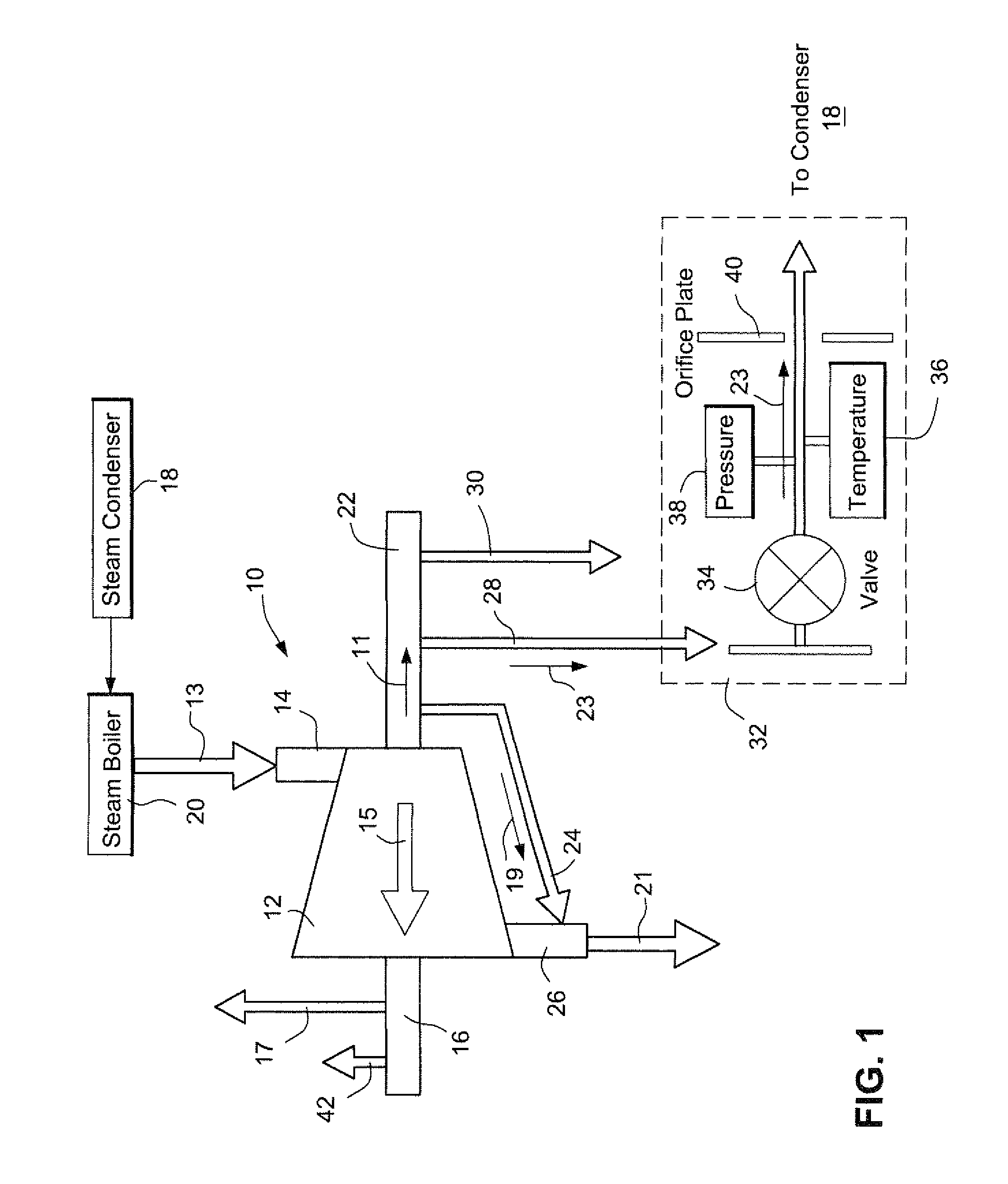Method for determining steampath efficiency of a steam turbine section with internal leakage
- Summary
- Abstract
- Description
- Claims
- Application Information
AI Technical Summary
Benefits of technology
Problems solved by technology
Method used
Image
Examples
Embodiment Construction
[0011]FIG. 1 is a simplified diagram depicting an arrangement 10 for re-routing sealing steam 11 in a steam turbine 12 so that a more accurate measurement of the steam turbine's efficiency can be made.
[0012]As shown in FIG. 1, heated, high pressure steam 13 from a pressure vessel or steam boiler 20 enters steam turbine 12 at main steam inlet 14. A majority 15 of the high pressure steam 13 fed into steam turbine 12 passes along the turbine's axis through multiple rows of alternately fixed and moving blades (not shown). Steam turbine 12 uses the blades to extract energy from the high-pressure steam 15, so as to be rotated by the high pressure steam 15. The low pressure end packing 16 is fed by the high pressure end packing leak off 24. Part of this flow goes through the first leak off line 17. A second part of this flow goes through the second leak off line 42. The remainder of the flow mixes with the main steam flow 15 to form the exhaust steam 21.
[0013]A portion of the steam 13, cal...
PUM
 Login to View More
Login to View More Abstract
Description
Claims
Application Information
 Login to View More
Login to View More - R&D
- Intellectual Property
- Life Sciences
- Materials
- Tech Scout
- Unparalleled Data Quality
- Higher Quality Content
- 60% Fewer Hallucinations
Browse by: Latest US Patents, China's latest patents, Technical Efficacy Thesaurus, Application Domain, Technology Topic, Popular Technical Reports.
© 2025 PatSnap. All rights reserved.Legal|Privacy policy|Modern Slavery Act Transparency Statement|Sitemap|About US| Contact US: help@patsnap.com


